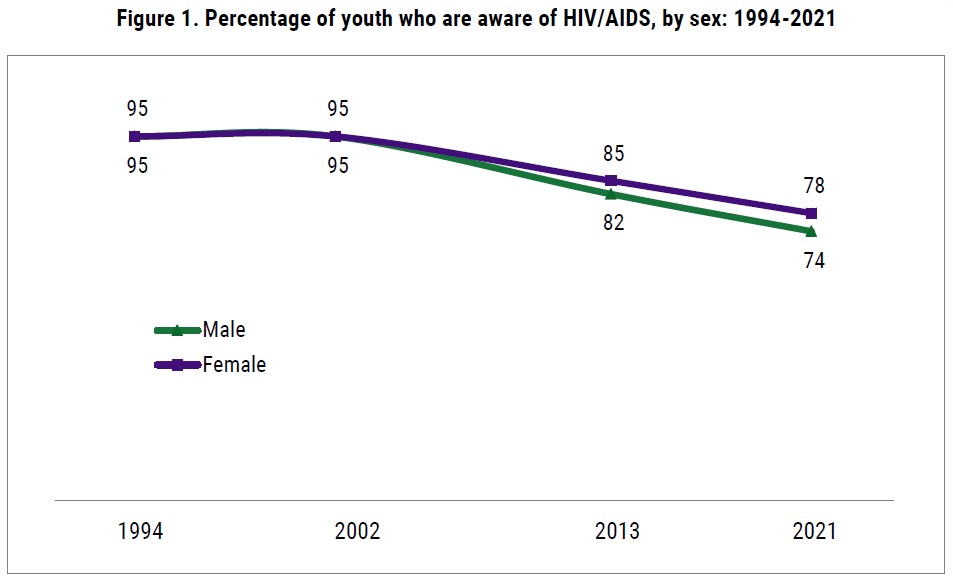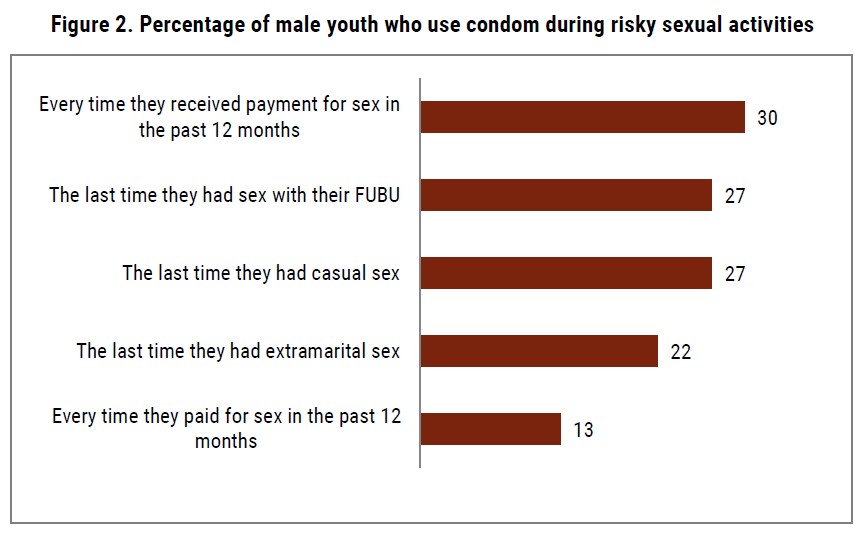Youth awareness of HIV/AIDS drops to all-time low
Amid a growing epidemic of human immunodeficiency virus (HIV) and/or acquired immuno-deficiency syndrome (AIDS) in the Philippines, the percentage of Filipino youth who are aware of HIV and/or AIDS has declined to its lowest level since 1994.
Based on the 2021 Young Adult Fertility and Sexuality Study (YAFS5), 76% of young Filipinos aged 15-24 have heard of HIV and/or AIDS, a 19-percentage point drop from 1994 when awareness stood at 95%. This sustains the decrease observed in 2013, when the share of youth who have heard of HIV and/or AIDS declined to 83% from 95% in 2002 (Figure 1).

Among those who have heard of HIV and/or AIDS, the YAFS5 also examined the percentage of those with comprehensive knowledge of HIV, based on five standardized statements consisting of a mix of correct information and misconceptions about the virus. In all, only 19% or one in five youth has comprehensive knowledge of HIV. The percentage significantly changed among women, from 16% in 2013 to 19% in 2021, but not among men, which only slightly changed from 18% in 2013 to 19% in 2021.
More than half or 52% of youth incorrectly believed that a person can get HIV by sharing food with someone who is infected. About two in five, on the other hand, did not believe that a healthy-looking person can have HIV.
Some 35% of young people also did not believe that a person can reduce the risk of getting HIV infection by using a condom during sex, contrary to multiple evidence that consistent condom use is very effective against HIV transmission. YAFS5 data show a low level of condom use during high-risk sexual activities, such as transactional and casual sex, among male youth (Figure 2).

Information gaps can stall efforts to arrest the number of HIV infections in the Philippines, which has the fastest-growing HIV epidemic in the Asia-Pacific region. According to the Department of Health, there were a total of 115,100 people living with HIV in the country in 2020, and 90% of the new infections were recorded among young males who have sex with males. Should the trend persist, the number of HIV cases is estimated to reach over 330,000 by 2030.
Among the global targets of Sustainable Development Goals is to eradicate AIDS by 2030. This year’s World AIDS Day commemoration carries the theme “Equalize,” drawing attention the need to “address the inequalities which are holding back progress in ending AIDS.”
Note: An earlier version of this article was posted on the UPPI website and was updated in time for World AIDS Day, 1 December 2022.
---
Download this press release here.
Share
